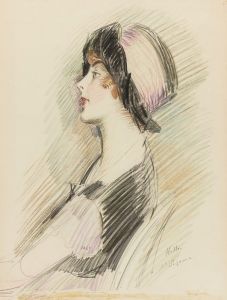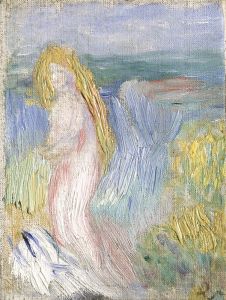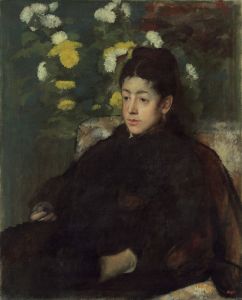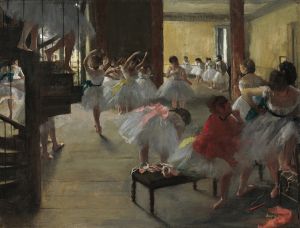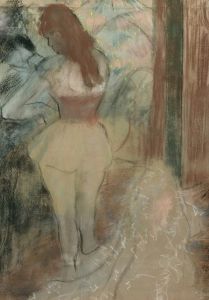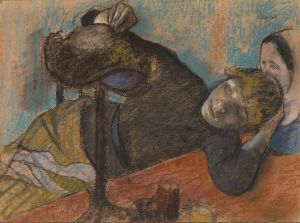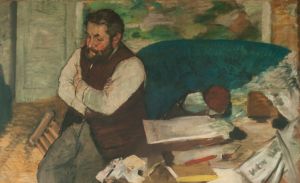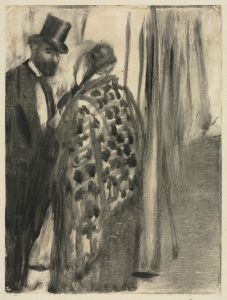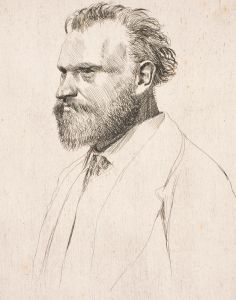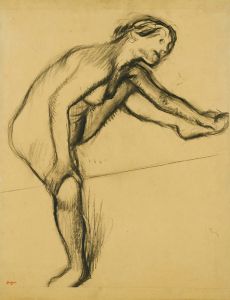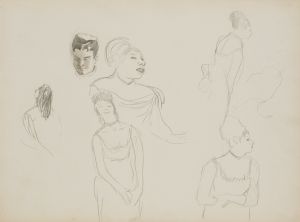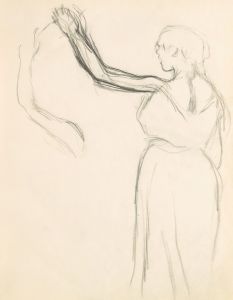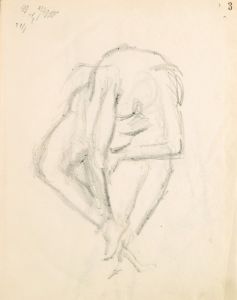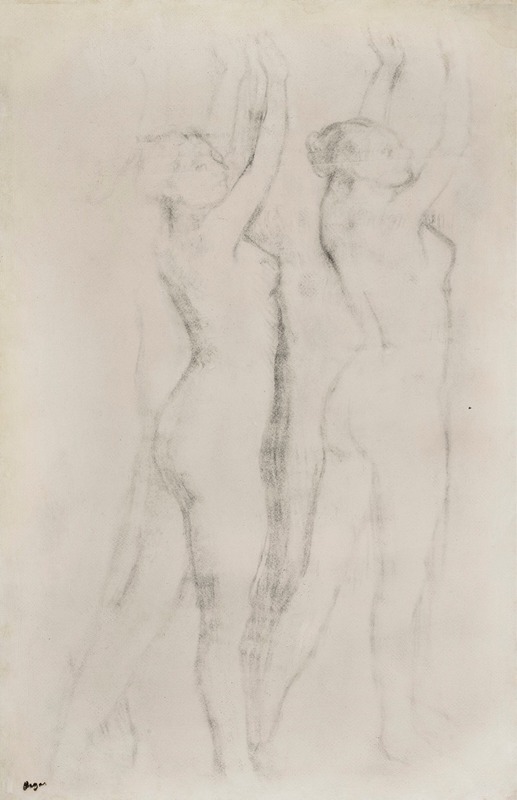
Deux femmes nues, les bras levés
A hand-painted replica of Edgar Degas’s masterpiece Deux femmes nues, les bras levés, meticulously crafted by professional artists to capture the true essence of the original. Each piece is created with museum-quality canvas and rare mineral pigments, carefully painted by experienced artists with delicate brushstrokes and rich, layered colors to perfectly recreate the texture of the original artwork. Unlike machine-printed reproductions, this hand-painted version brings the painting to life, infused with the artist’s emotions and skill in every stroke. Whether for personal collection or home decoration, it instantly elevates the artistic atmosphere of any space.
Edgar Degas, a prominent French artist known for his contributions to Impressionism, created a wide array of artworks that explored various themes, including ballet dancers, racehorses, and everyday life in Paris. Among his diverse body of work is the painting "Deux femmes nues, les bras levés" (Two Nude Women, Arms Raised). This painting exemplifies Degas's interest in the human form and his skill in capturing the subtleties of human anatomy and movement.
"Deux femmes nues, les bras levés" is a testament to Degas's fascination with the human body, a subject he explored extensively throughout his career. Unlike many of his contemporaries, Degas often chose to depict his subjects in intimate, private moments rather than in grand, public settings. This painting is no exception, as it portrays two nude women in a seemingly private and personal moment, with their arms raised in a gesture that suggests stretching or reaching.
Degas's approach to the human figure was heavily influenced by his academic training and his admiration for classical art. He studied at the École des Beaux-Arts in Paris and was deeply inspired by the works of the Old Masters, which is evident in his meticulous attention to detail and his ability to convey the texture and form of the human body. In "Deux femmes nues, les bras levés," Degas employs a keen understanding of anatomy to render the figures with a sense of realism and vitality.
The composition of the painting reflects Degas's innovative use of perspective and cropping, techniques that he often employed to create a sense of immediacy and intimacy. By focusing closely on the figures and excluding extraneous details, Degas draws the viewer's attention to the subtle interplay of light and shadow on the women's bodies. This focus on the play of light is a hallmark of Degas's work and aligns with the broader Impressionist interest in capturing the effects of light and atmosphere.
Degas's choice of medium also plays a significant role in the overall effect of the painting. While he is best known for his work in pastels, Degas was also an accomplished painter in oils, and he often experimented with different techniques to achieve the desired texture and depth. In "Deux femmes nues, les bras levés," the use of oil paint allows for a rich, layered application that enhances the tactile quality of the skin and the subtle gradations of tone.
Throughout his career, Degas was known for his ability to capture the essence of his subjects with both empathy and objectivity. In "Deux femmes nues, les bras levés," this duality is evident in the way he presents the figures with both a sense of vulnerability and strength. The painting invites viewers to contemplate the beauty and complexity of the human form, a theme that resonates throughout Degas's oeuvre.
While "Deux femmes nues, les bras levés" may not be as widely recognized as some of Degas's other works, it remains an important example of his exploration of the nude and his ongoing interest in the human condition. The painting reflects Degas's mastery of technique and his ability to convey the subtleties of human emotion and physicality, solidifying his reputation as one of the leading figures of the Impressionist movement.






